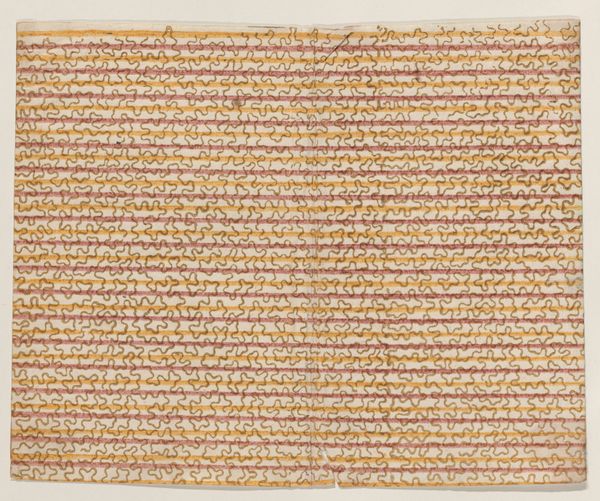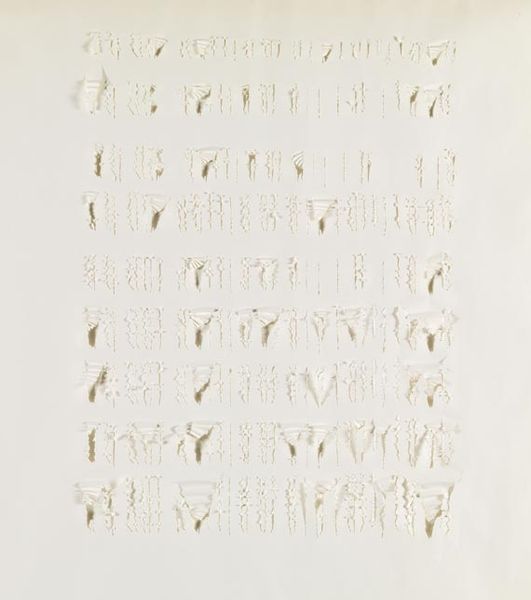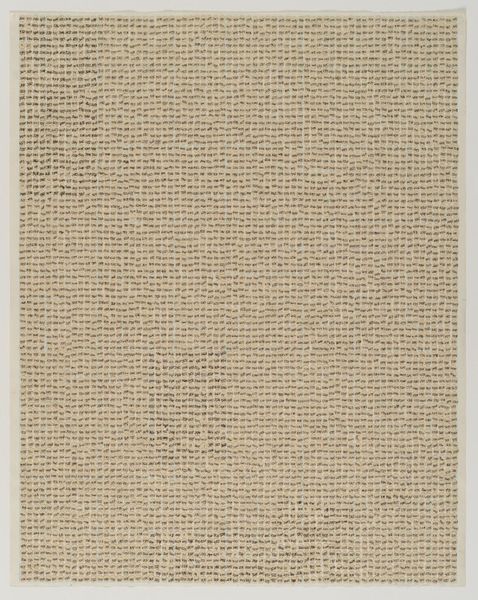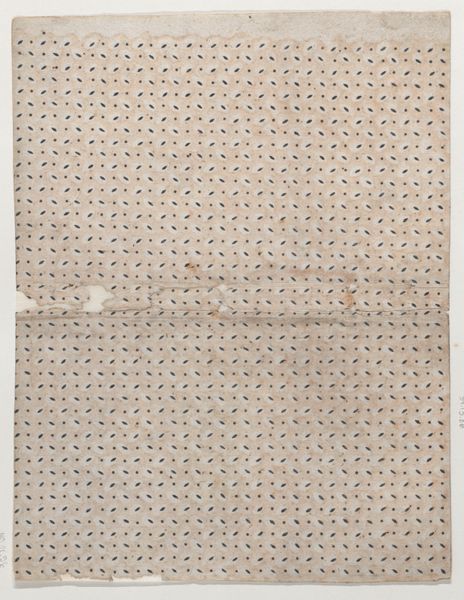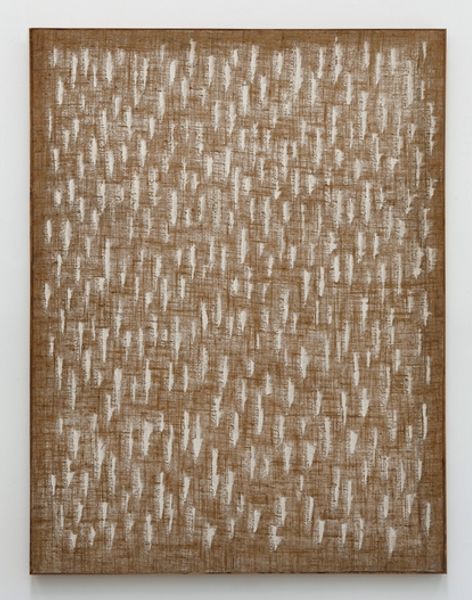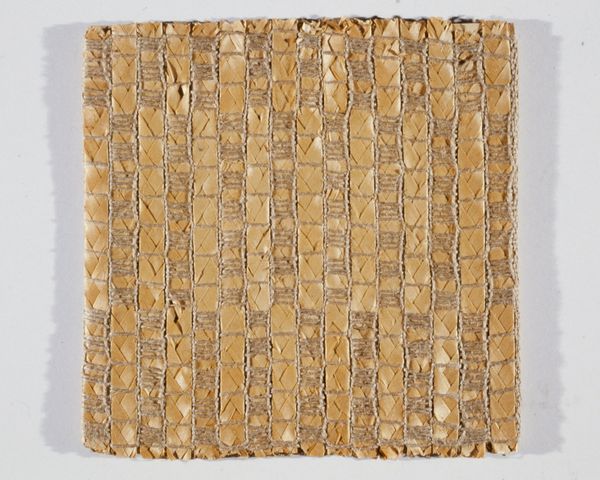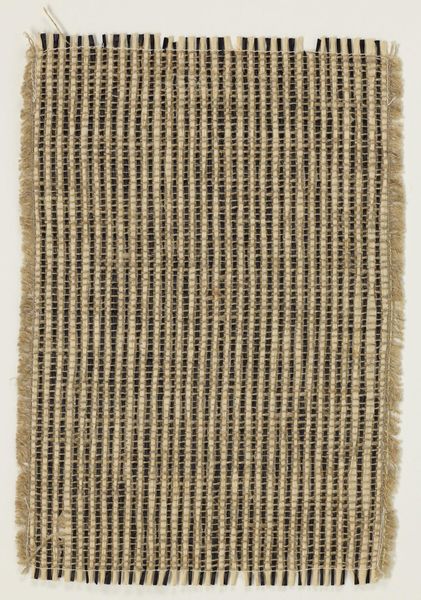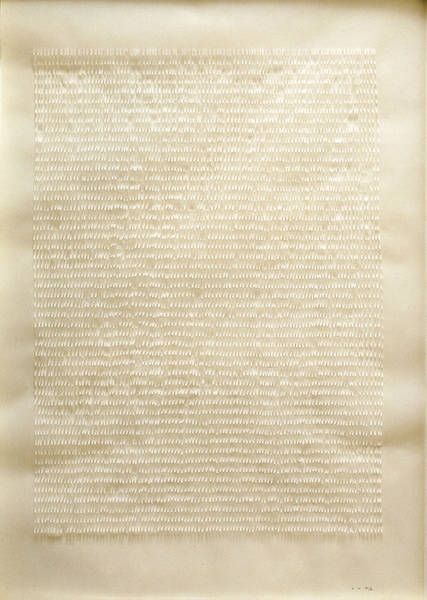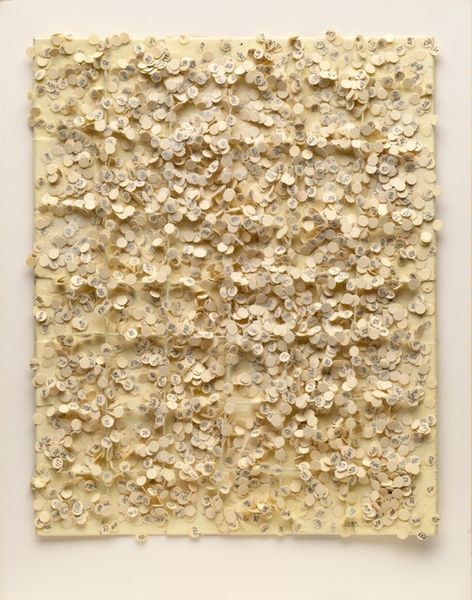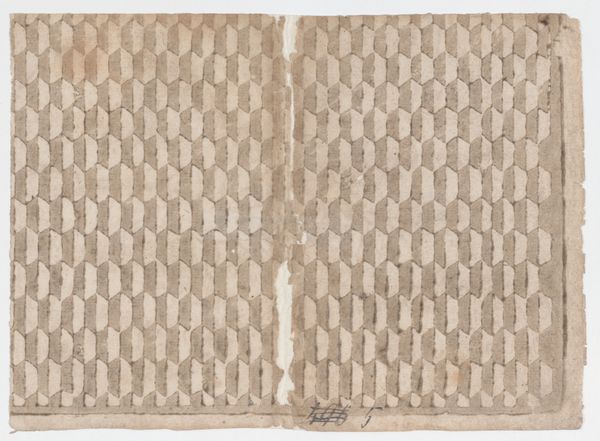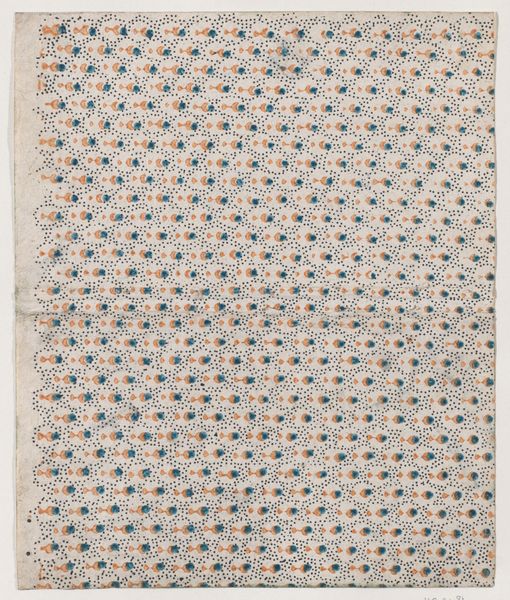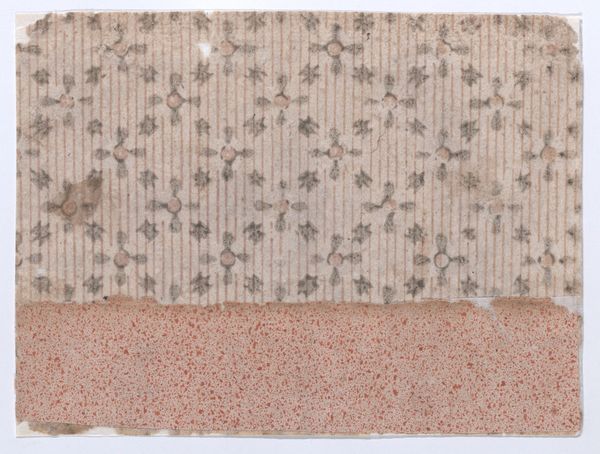
painting, oil-paint
#
organic
#
painting
#
oil-paint
#
pattern
#
abstract
#
geometric pattern
#
abstract pattern
#
organic pattern
#
geometric
#
line
#
pattern repetition
#
hard-edge-painting
#
monochrome
Dimensions: 153 x 116 cm
Copyright: Ha Chong-Hyun,Fair Use
Curator: Ha Chong-Hyun's "Work 74-06," painted in 1974, offers an intriguing interplay of material and form. It's an oil-on-canvas piece dominated by horizontal bands. What’s your initial response? Editor: I immediately notice a feeling of controlled tension. The monochrome palette focuses my attention on the tactile qualities of the medium. The dripped, white horizontal lines strike me as symbols of controlled chaos, maybe alluding to natural forms breaking structure. Curator: An interesting observation. In considering its place in art history, we should acknowledge that Ha was a central figure in the Dansaekhwa movement, Korean monochrome painting, which sought to push against the established norms of painting within a politically turbulent climate. This piece exemplifies their interest in materiality. Editor: I find those horizontal, dripping white lines so compelling. To me, they recall ancient glyphs eroded by time or perhaps water damage. Do you think those lines could stand for lost stories, histories erased or obscured? The rawness reminds us how memories decay and vanish. Curator: It’s tempting to see it that way. Given that the Dansaekhwa movement emerged during a period of significant political and social change in South Korea, a history of imperial influence followed by the Korean war and dictatorial rule, it can be argued that this work uses abstraction to challenge imposed narratives, pushing back against traditional artistic conventions approved and promoted by the state. Editor: I understand. In that context, the disruption of form with those drip-like qualities would be considered pretty provocative. Considering how those repetitive bands create a visual language, it may be worth studying to identify recurring images and what we might find when interpreting them. Curator: Exactly. While the drips add an element of spontaneity, the geometric composition and use of a singular palette offer a sense of restraint and order, reflective of a push for unity that marked the artistic production from that period. It shows the complexity within simplicity. Editor: I hadn't considered that paradox of spontaneity with restraint, and I find that observation helpful to understanding how this image challenges traditional symbols of cultural solidity to open a space for re-evaluation. Curator: I agree. It’s this duality that makes it such a powerful piece of art, and this has been useful in helping us articulate its role as an iconoclastic expression that both adheres to and undermines formal structure.
Comments
No comments
Be the first to comment and join the conversation on the ultimate creative platform.
